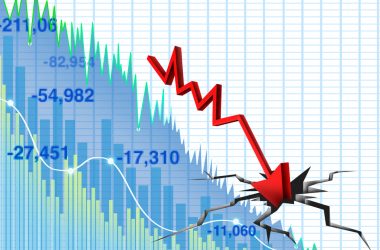In a concerning revelation for the U.S. housing market, homebuilder sentiment has dipped to its lowest point since April. This decline, primarily attributed to the recent uptick in interest rates, is affecting the affordability of homes for potential buyers.
The National Association of Home Builders/Wells Fargo sentiment index dropped to 45 in September, down from 50 in August, when builder sentiment had taken its first hit since December last year. This decline was not anticipated, with many experts previously estimating a steady sentiment reading of 50. Consequently, there was a noted reduction in the foot traffic of potential homebuyers.
Mortgage Rates Put Pressure On Housebuilders
Robert Dietz, the Chief Economist at the NAHB, expressed concerns, stating, “Rising mortgage rates are significantly impacting both builder confidence and consumer interest. Many potential buyers are choosing to postpone their purchase decisions, hoping for a future decrease in long-term rates.” He further emphasized that the solution lies in policy changes, which can facilitate builders in expanding the housing supply, thus addressing the prevailing affordability crisis.
This sentiment decline has arisen despite a marked increase in demand for new home constructions during the first half of 2023, owing to higher interest rates deterring homeowners from selling. However, with the recent data in hand, it’s evident that this recovery momentum has been disrupted.
Mortgage rates have been on a steady ascent since the Federal Reserve began increasing interest rates in March 2022, maintaining a level above 7% from early August – a rate unparalleled since 2002.
A Decline In Sales
Builders also noted a decline in sales expectations for September due to the downward adjustment in home prices. Remarkably, about 32% of builders reduced their prices this month, a figure not seen since December 2022.
Moreover, builders are ramping up their sales incentives to lure in buyers who are currently holding off due to these high rates. The NAHB reported a significant rise in builders opting for price cuts to stimulate sales, with the percentage jumping to 32% this month from 25% in August. The average discount offered stood at 6%. Notably, about 59% of builders in September have turned to incentives beyond just price reductions.
First Time Buyers Cast Some Hope
In a positive light, there has been an increase in first-time buyers entering the market. The NAHB survey highlighted that 42% of new single-family home buyers were first-time purchasers, a considerable surge from the 27% observed in 2018.
While homebuilders might be adopting a cautious stance, the sector has remained a glimmer of hope in the housing industry. The predominant challenge faced by the industry is the scarcity of homes. Given the prolonged period of underbuilding, it’s anticipated that the demand for homes might remain consistent over the next few years, even if interest rates and property prices remain elevated.
In a response to the current scenario, Robert Dietz asserted, “To alleviate housing inflation and mitigate the affordability crisis, it’s essential to adopt policies at all governmental levels. This will empower builders to increase home construction and bridge the national housing gap, which is currently around 1.5 million units.”
Mixed Market Reactions
Financial market reactions have been mixed. The 10-year Treasury note yield stood at over 4.3%. Notably, shares of prominent homebuilders such as D.R. Horton, Toll Brothers, and Lennar saw a positive trend in the morning trading session.
However, a closer look at the stock market might offer a more long-term perspective on where the housing market is headed. Despite recent downturns, the broader market performance of homebuilding indices over the last year indicates optimism for a potential Federal Reserve policy shift, which might ease borrowing costs in the future.
2023 Overall A Good Year For Housebuilders
The housing sector was affected in 2022 due to high inflation and increasing interest rates, but 2023 has shown signs of improvement for the market.
Challenges related to inflation and supply chains in the housing sector are becoming less severe. This change could positively affect the costs for builders. The U.S. retail inflation increased by only 3% in June, the smallest rise in over two years.
Although the interest rates for mortgages have risen since the Covid-19 pandemic, the Federal Reserve has refrained from making any rate hikes. The average 30-year fixed-rate mortgage in the U.S. now stands at around 6.8%, which is a decline from the highs of about 7.1% observed at the end of the last year.
The U.S. housing market is currently facing an undersupply issue. Estimates suggest a shortage ranging between 1.5 million to 5 million homes. This situation suggests that the housing sector may still experience steady demand, with consistent volumes and revenues.
WeInvests is a financial portal-based research agency. We do our utmost best to offer reliable and unbiased information about crypto, finance, trading and stocks. However, we do not offer financial advice and users should always carry out their own research.
Read More













